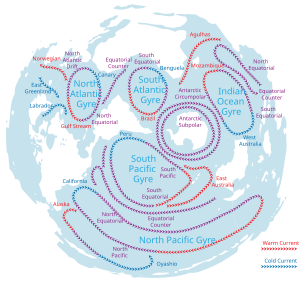Another way to reduce waste in the United States is through the implementation of recycling initiatives. Such initiatives include landfill bans and mandatory recycling programs.
Much of the waste that is sent to landfills is waste that can be recycled. For example, in 2018 23.05% of the MSW generated by the United States was paper and paperboard waste.  And over the past 58 years, the majority of MSW has been paper and paperboard waste, which can be recycled.
And over the past 58 years, the majority of MSW has been paper and paperboard waste, which can be recycled. Materials that can be recycled include paper, cardboard, glass bottles and jars, juice and milk cartons, plastic bottles, steel, and aluminum cans, as well as empty aerosols. Although some of the waste in the United States is recycled it is not enough in comparison to the amount of waste that is produced. Only about 23.6% of the total amount of waste produced in the United States is recycled since about 69 million tons out of 292 million tons.
Materials that can be recycled include paper, cardboard, glass bottles and jars, juice and milk cartons, plastic bottles, steel, and aluminum cans, as well as empty aerosols. Although some of the waste in the United States is recycled it is not enough in comparison to the amount of waste that is produced. Only about 23.6% of the total amount of waste produced in the United States is recycled since about 69 million tons out of 292 million tons.
A landfill ban, as defined by the Sustainable Packaging Coalition, “starts as a written clause, generally found within municipal solid waste statutes that prohibit certain materials or items from being disposed of in a landfill and necessitating alternative disposal or recycling options”. State and local governments can determine which items can no longer be disposed of in such a way that they get sent to the landfills. For example, in North Carolina, they cannot knowingly dispose of aluminum cans and certain kinds of plastic containers.
Another way to promote recycling is through mandatory recycling programs. Mandatory recycling programs can fine citizens who dispose of a certain percentage of recyclable materials to landfill waste. For example, Seattle implemented a mandatory recycling ordinance that required businesses as well as households and apartments to dispose of recyclable material in the proper way. This means that businesses must recycle all paper, cardboard, and yard waste while households and apartments must recycle all paper cardboard, aluminum, glass, and plastic. For both businesses and apartments, if more than 10% of their garbage is found to be recyclable a tap will be left and after the third tag, they will be fined $50. But for households, a tag is left, and they are asked to sort out the recyclables themselves. This program seemed to work relatively well. No one got fined since very few people even got a second tag. Apartment tags went from 77 to 41 and business tags went from ten to two in only one month. The fine was able to incentivize people to dispose of recyclables properly, which was able to increase the recycling rates and decrease the waste that made it to the landfills in Seattle. This type of program could be applied to multiple cities to incentivize people to recycle more with minimal effort involved.
Recycling initiatives have many advantages but there are also a few tradeoffs. The benefits include an increase in the amount of recyclable waste that makes it to recycling centers and thereby decreases the amount of waste that makes it to landfills. An increase in recycling also is beneficial to the economy in that it creates more jobs as well as increased wages and tax revenues. The national Recycling Economic Information (REI) Study in 2016 found that recycling and reuse activities in the United States accounted for 681,000 jobs, $37.8 billion in wages, and $5.5 billion in tax revenues. This is equivalent to 1.17 jobs for every 1000 tons of recycled material and $65.23 in wages as well as $9.42 in tax revenue for every ton of recycled material59. So, for every increase in 1000 tons of recycled material 1.17 more jobs are created. Therefore, an increase in recycling benefits the economy.


 Many people picture a huge island made of trash but in reality, it just looks like cloudy water. Although the Great Pacific Garbage Patch is not an island there is an island in the Maldives that is completely man-made from trash. But, many of the garbage patches that exist look like the Great Pacific Garbage Patch. The Great Pacific Garbage Patch is only one of many areas in the ocean that are highly concentrated with plastic.
Many people picture a huge island made of trash but in reality, it just looks like cloudy water. Although the Great Pacific Garbage Patch is not an island there is an island in the Maldives that is completely man-made from trash. But, many of the garbage patches that exist look like the Great Pacific Garbage Patch. The Great Pacific Garbage Patch is only one of many areas in the ocean that are highly concentrated with plastic. A
A 


